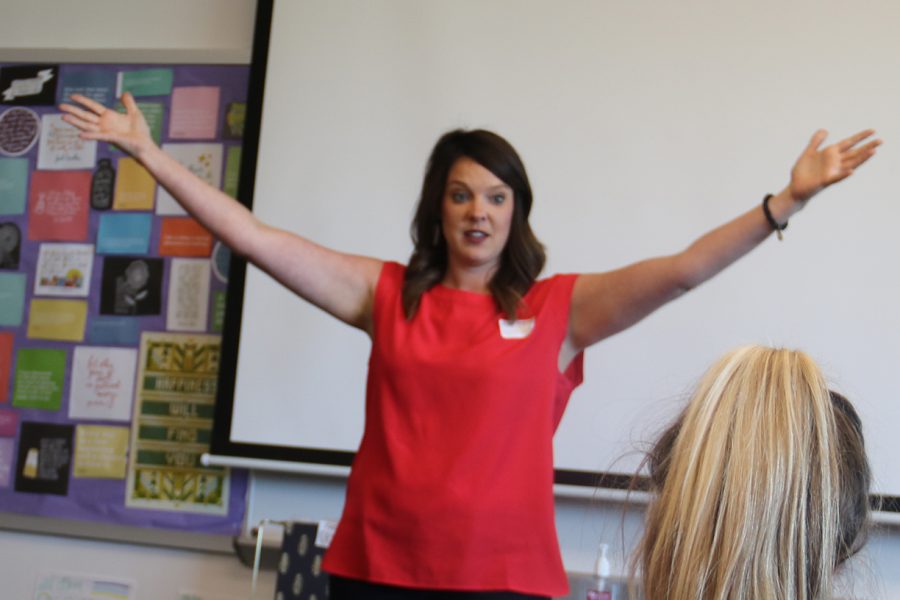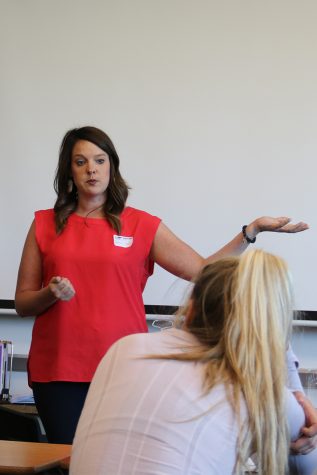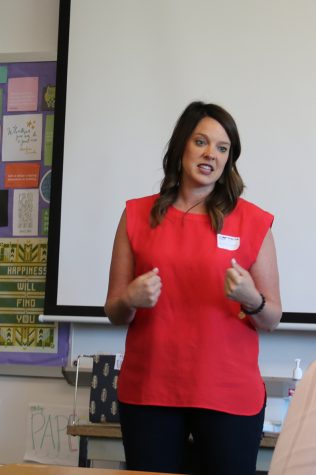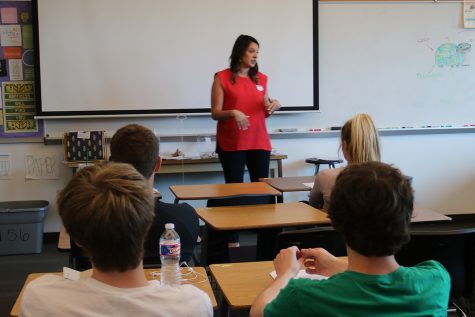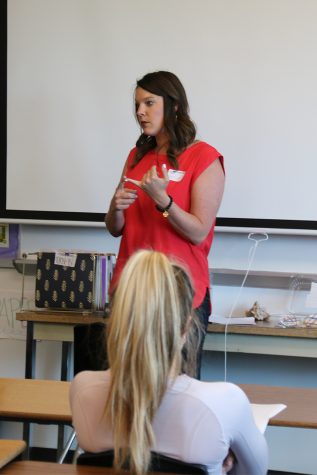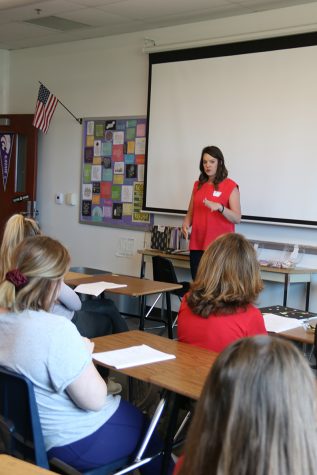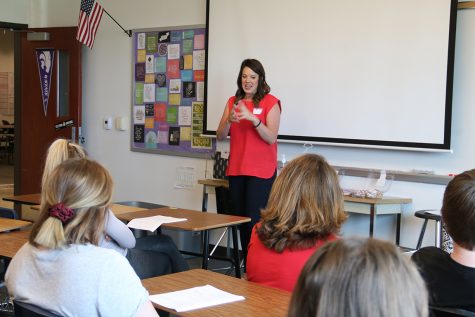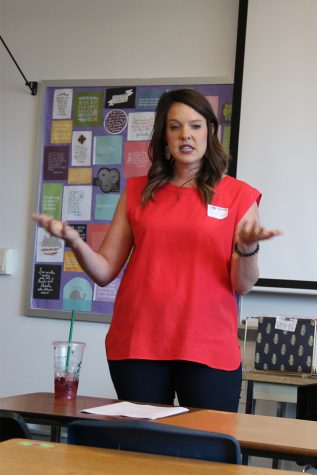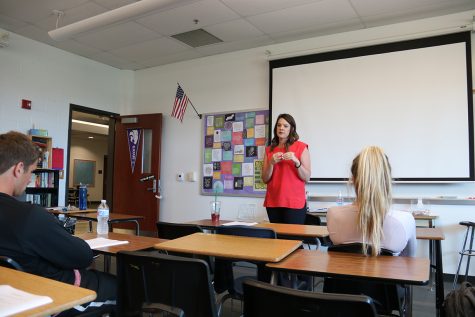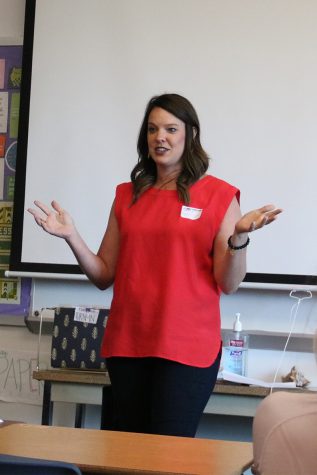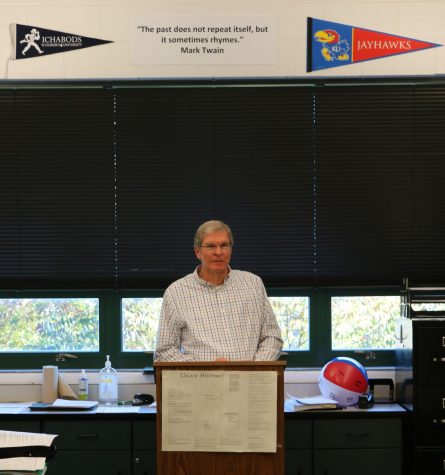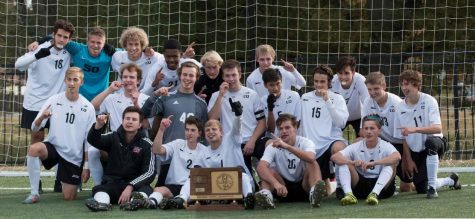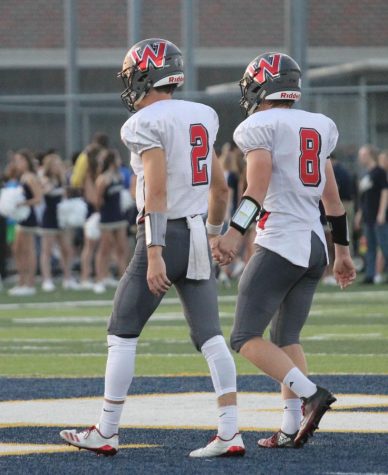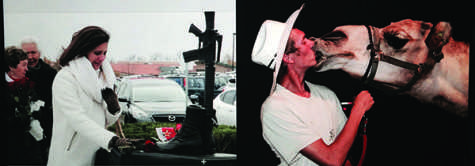Speaking Effectively (Guest Speaker – Heather O’Keefe)
Switch to project based learning makes students anxious with final presentations
Finals week brings a variety of assessments of students. From a weightlifting final with Coach Wright, to a Chemistry exam with teacher Mike Alsin, nearly every skill taught is assessed somewhere in the school this week. One skill, tested in many English classes, is the often dreaded, public speaking. Teacher Catherine Madderom brought in a professional communicator, Heather O’Keefe, to speak with her students on how to give a great presentation as theirs loomed in the coming week.
O’Keefe’s presentation focused on preparation, material, and presentation as the three main aspects of communication.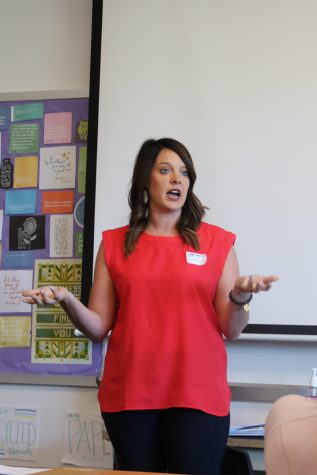
For preparation, she says “before you communicate anything, clearly define the purpose of what you want to accomplish:
What do you want the audience to FEEL?
What do you want the audience to KNOW?
What do you want the audience to do?
She explained that “the best way to win the crowd is to be yourself. Show up confidently in who you are and what you are presenting” and that when you are asked to speak on a topic you are already the most qualified person to speak on that topic because you have been invited.
Regarding spoken material, her words of wisdom are “don’t say in 100 words what you could in 10. Everything you add after you make your big point dilutes it.” As for presentation materials, she told them: if you don’t need them, don’t use them. If you need them, use them.
Regarding presentation, she stressed four key points: appearance, body language, words, and emotions, as the key components of a presentation.
Her rules for appearance are: presentation is key, don’t wear anything distracting, and check yourself in the mirror.
Her points on body language addressed whether or not your posture communicated your point. She also told students to consider what their movement looks like on stage.
She addressed how transitions, filler words, clarity, pace, and tone could determine your effectiveness as a communicator.
Finally, she told the students not to let their presentation content distract from their words and to make sure they had someone proofreading their work.



